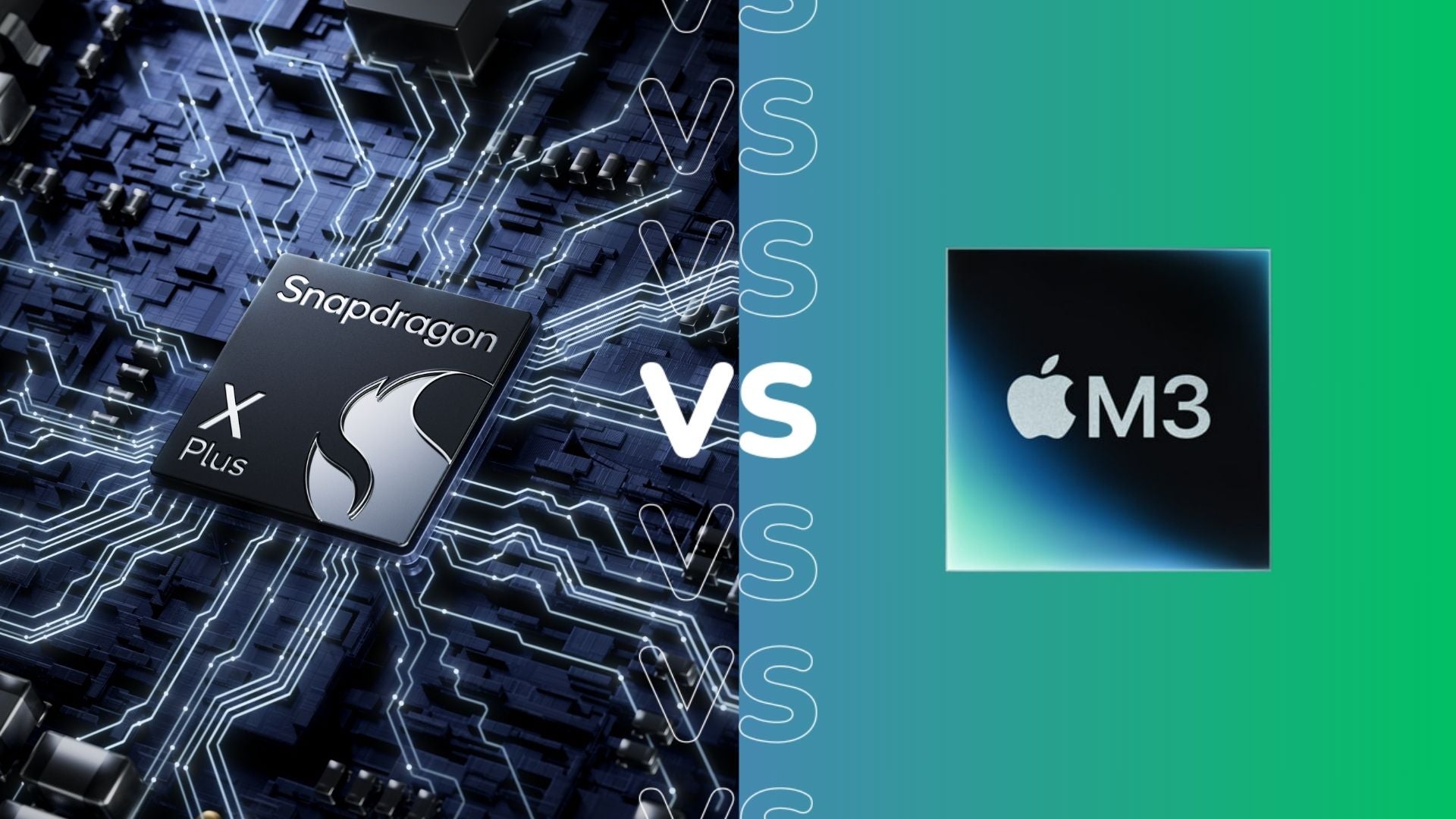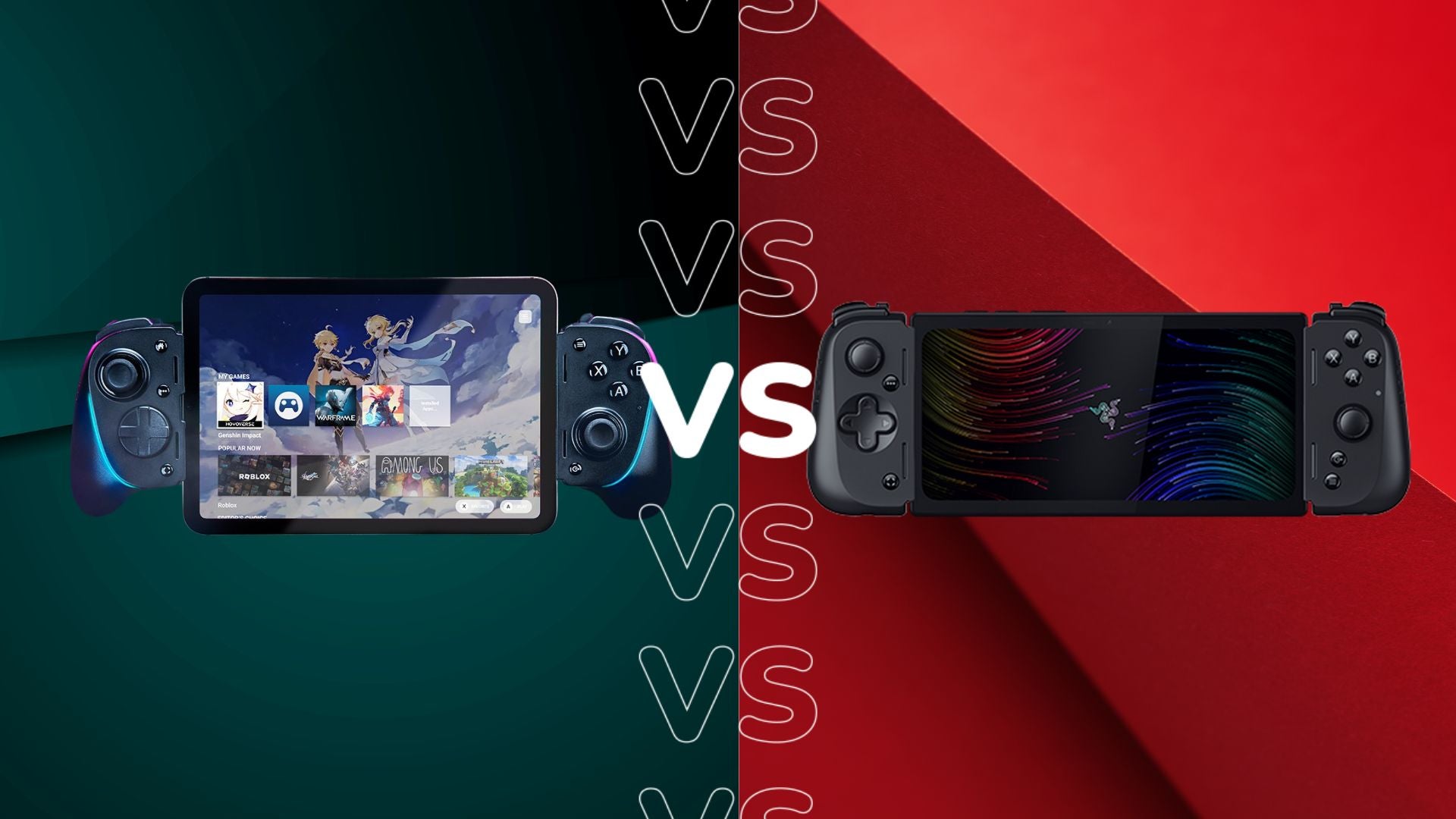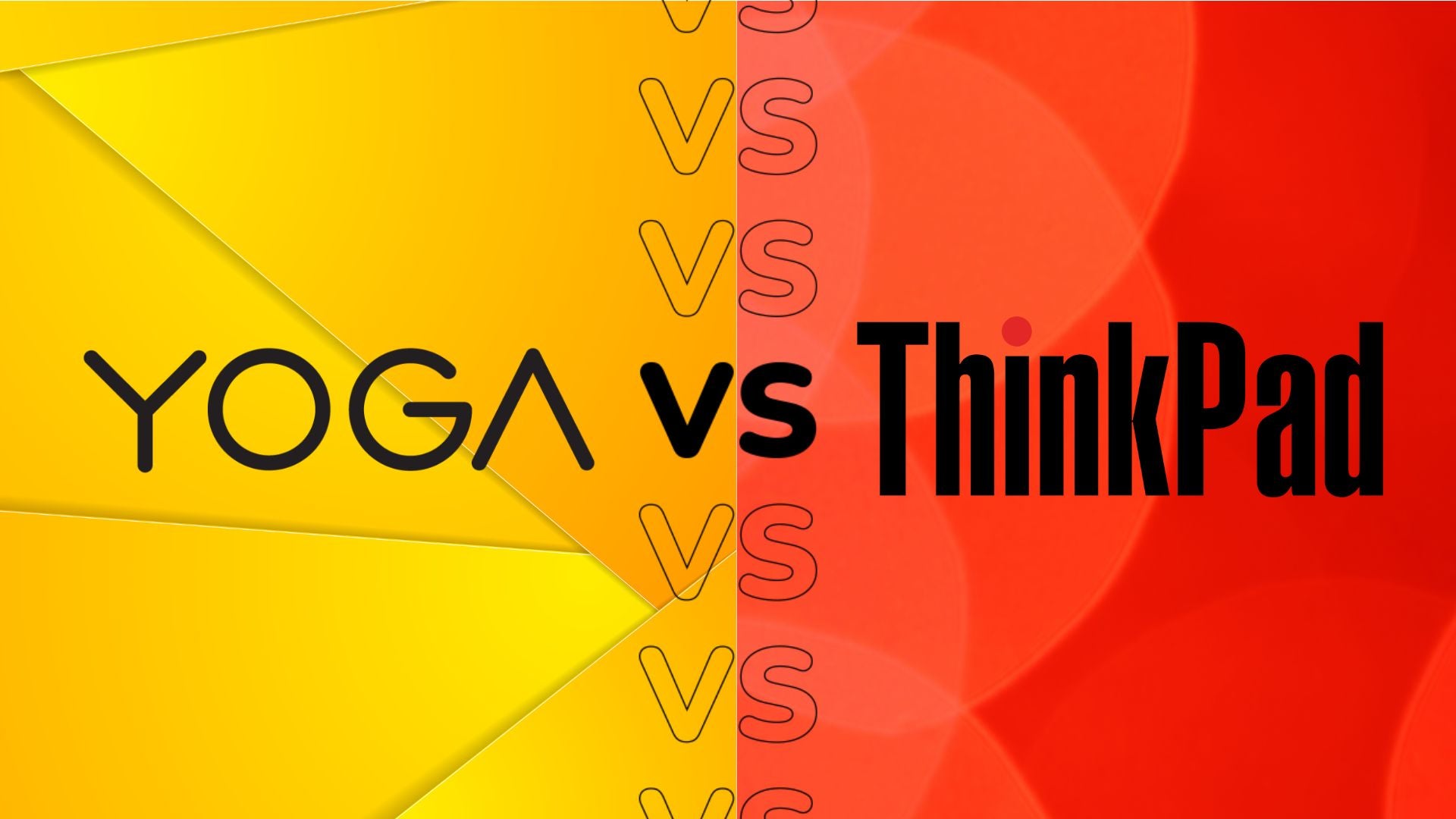Netflix vs Amazon Prime Video: Which streaming platform is better?
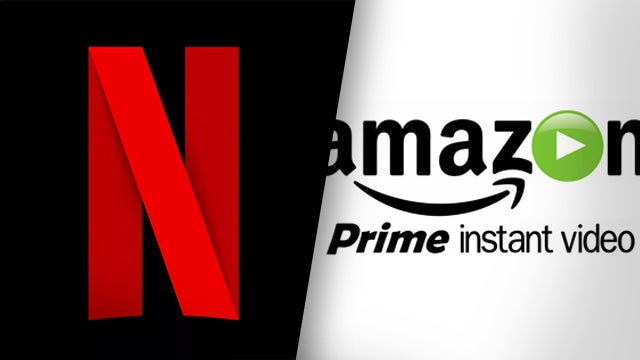
Netflix and Prime Video are two of the biggest streaming services available, each with a huge library of content from blockbuster films to exclusive TV series.
With so many streaming services now available, it’s no longer cost effective to subscribe to every single one. So if you’re having to choose between Netflix and Amazon Prime Video, which is the best to go for?
We’ve attempted to answer that question by creating this versus guide, which will highlight all of the key differences, as well as summing up the subscription costs. Check out our guide below.
Pricing and subscription tiers
When it comes to pricing, both Netflix and Amazon Prime Videos offer a couple of different subscription tiers at varying prices.
Amazon is the cheaper option of the two if we’re to compare the services in Full HD or Ultra HD, as Netflix’s Standard plan costs £2 more per month compared to Prime.
However, Netflix does cost less if you’re willing to settle for HD and is half the price of Amazon if you’re happy to sit through adverts as well.
Amazon’s Prime subscription (which is required to access Prime Video in the UK), meanwhile, includes the advantage of one-day and premium delivery when you shop for other products through the retailer.
You can find all of the current pricing below.
Netflix
- Basic With Adverts: $6.99/£4.99/€4.99
- Basic: $9.99/£6.99/€7.99
- Standard: $15.49/£10.99/€12.99
- Premium: $19.99/£15.99/€17.99
Amazon Prime (includes Prime Video)
- Regular: $14.99/£8.99/€8.99 or $139/£95/€89.90 per year
- Student: $7.49/£4.49/€5.99 or $69/£47.49/€49 per year
US users can also sign up for Prime Video separately at $8.99 a month, though this option isn’t available in the UK.
Supported devices
Netflix and Amazon Prime Video are both available on a wide range of devices including a variety of streaming players, smart TVs, game consoles, set-top boxes, smartphones, tablets and PCs.
You just need to make sure your device is compatible with your chosen streaming service.
Interface
Netflix’s interface consists of floating rows with a spotlight section at the top to highlight trending series and films. The first line is reserved for My List, with the next up being the Continue Watching row.
After that, there are plenty of other rows (including rows for specific genres and Watch It Again) which appear in a seemingly random order with up to 76 titles on each row.
The app is also broken down into sections, including Search, New & Popular, Categories, TV Programmes, Films, My List and Notifications. The smartphone app also has a game section, though otherwise, it’s quite consistent from device to device.
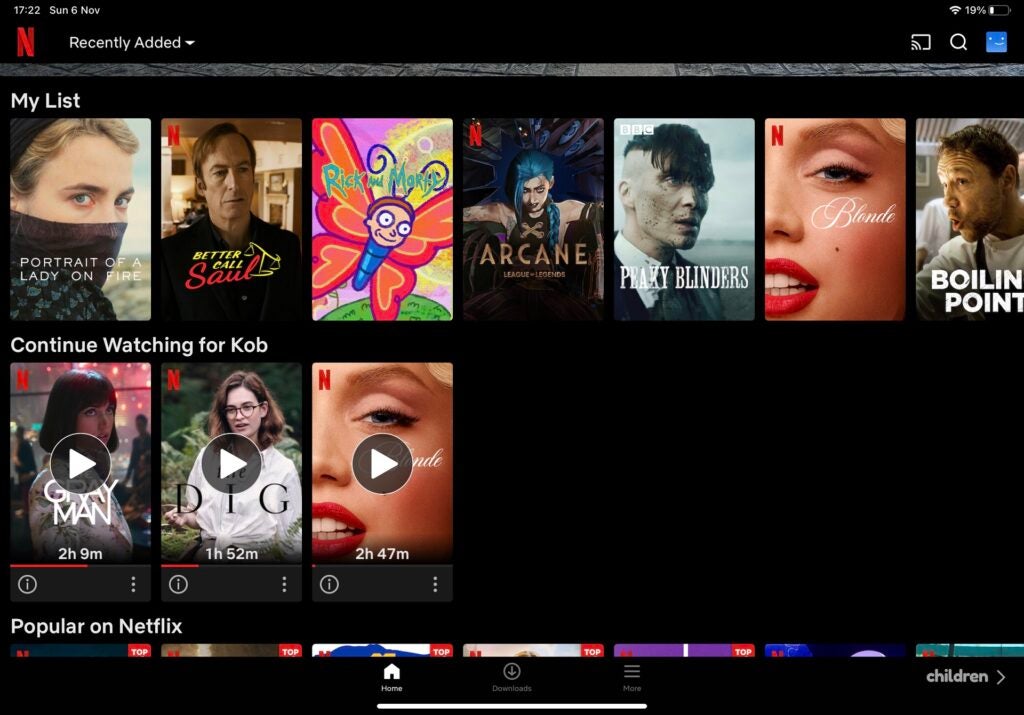
We found the interface made it easy enough to find specific content, though we would like the Continue Watching row to be placed above the My List one.
We haven’t reviewed Prime Video, but at a glance, there’s a carousel at the top to showcase multiple shows rather than one piece of content.
Prime Video also features sections for Home, Store, Channels, Categories, My Stuff and Sports, and takes much longer to scroll through compared to Netflix.
Both Netflix and Amazon allow you to create profiles to track the viewing history and recommendations for different family members, including kids. Netflix allows for up to 5 profiles, while Amazon has space for 6.
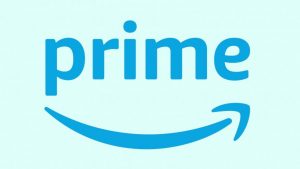
Sign up to Amazon Prime
Want to enjoy free next-day delivery and access to Prime Video? You can sign up to a free 30-day trial of Amazon Prime right now.
- Amazon
- Cancel any time
- 30-day free trial
Content
Netflix offers around 7000 titles in the UK, while Prime Video appears to have much more film content, including 24,000 movies and 2100 shows, according to a 2022 report by Business Insider.
Netflix and Prime Video are constantly switching TV shows/movies in and out of their libraries. Both services will pay licence fees to third-party companies in order to offer them up for streaming, but these agreements will expire after a certain length of time.
The expiration date is not shown to the viewer, but there will occasionally be a warning to say a TV show is about to disappear from the service, just in case you need to finish off the series in advance. And if a TV show or movie is popular, Netflix and Amazon Prime Video will often try to renew their agreements.

Both services also have exclusive content that they have commissioned, which should (but is not guaranteed) be a permanent fixture in their library. Some of the most popular TV shows from Netflix include Stranger Things, Squid Game, The Crown, House of Cards, Bridgerton, The Witcher and Bojack Horseman to name a few. There’s also a wide variety of genres and international content available on Netflix.
Popular Prime Video originals include Lord of the Rings: The Rings of Power, The Marvelous Mrs. Maisel, Good Omens and The Boys. Other content includes sports and reality TV from Hayu.
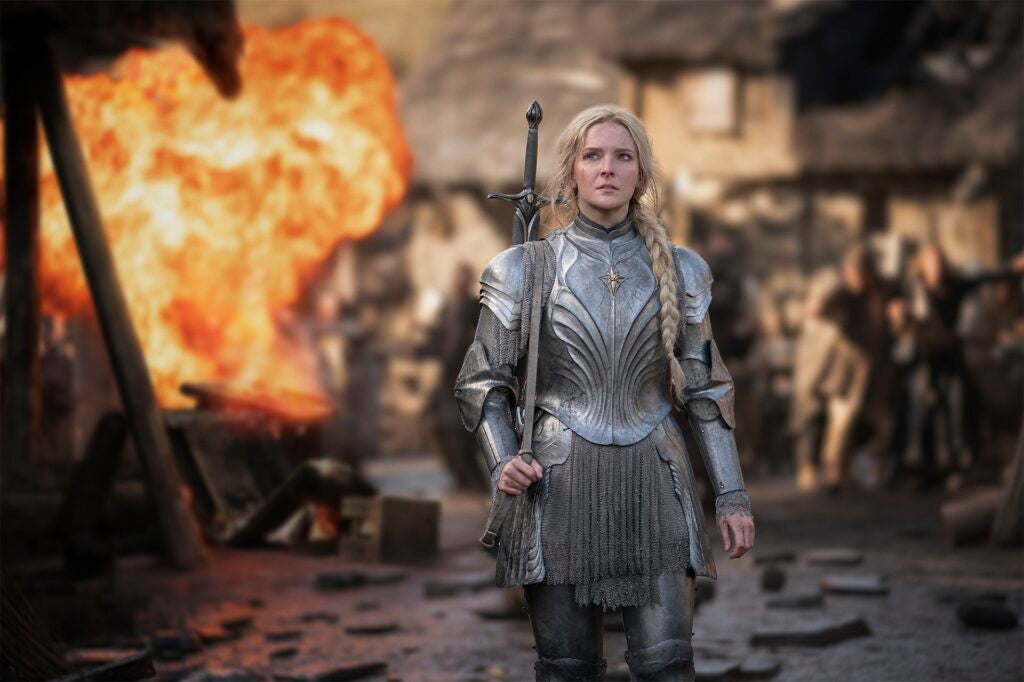
Amazon has so far failed to release many TV shows that have received the same level of hype and critical acclaim as Netflix, but Amazon has been busy backing extremely high-budget shows to stop this trend. Lord of the Rings: The Rings of Power is the most expensive TV show ever created per episode, while Citadel is also said to have a colossal budget.
Image and audio quality
On Netflix, the image quality you receive depends on your chosen plan.
The Basic and Basic with Ads plans allow you to stream in HD, with Basic also supporting downloads on 1 device at a time.
The Standard tier lets you stream in Full HD with downloads available on 2 devices at a time, while the Premium plan allows you to watch content in Ultra HD and supports downloads on up to 4 devices at a time.
Netflix also supports high-quality audio streaming across all titles with the Dolby Atmos, Dolby Digital Plus 5.1 or 5.1 icons next to their subscription. That is, as long as you have a compatible device to listen through.
Prime Video isn’t split into tiers, meaning you can access Ultra HD content where available regardless of whether you have a regular or student subscription.
Like Netflix, Prime Video supports 5.1 and Dolby Atmos audio where available.
Verdict
Both Netflix and Amazon Prime Video are available on a similar array of devices and can be streamed in resolutions of up to 4K with Dolby Atmos and 5.1 audio support on supported titles.
The main differences lie in the price and the specific titles available on each streaming service, with Netflix being the cheaper option if you don’t mind compromising on quality or adding adverts to your plan with its Basic and Basic With Adverts options.
The best way to decide between the two streaming services is to check out the content libraries they both offer and go from there.


